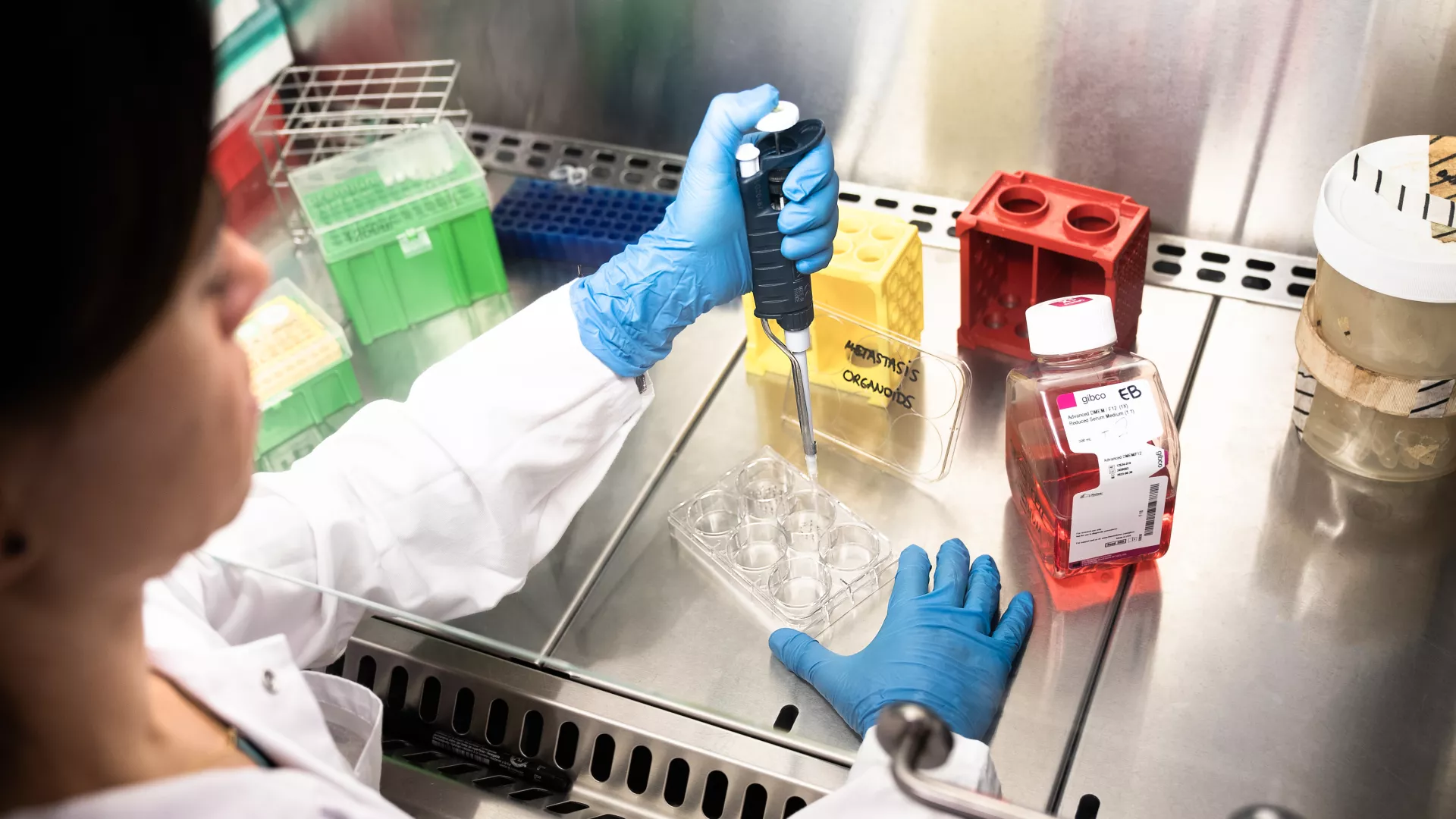Images
Contact

Researchers at IRB Barcelona describe a new mechanism that allows the segregation of nuclear and mitochondrial genetic codes in Trypanosoma.
Scientists at the Institute for Research in Biomedicine (IRB Barcelona) led by ICREA researcher Lluis Ribas de Pouplana, head of the Gene Translation Laboratory, have described a new mechanism that eukaryotic cells use to segregate the cytosolic protein translation machinery from that responsible for the translation mitochondrial proteins. The study has been published in this week’s advanced digital edition of the journal Proceedings of the National Academies of Sciences (PNAS).
More than two thousand years ago, a bacterium and an archaebacterium, each with its own genetic material, fused. This fusion event promoted the appearance of the eukaryotic cell, in which genetic information of the initial organisms was separated into distinct compartments: the nucleus (which contains the original genetic information essentially of archaebacteria), the cytosol (where genetic information of the nucleus is translated), and mitochondria, of bacterial origin, which conserve and translate their own genome. Lluis Ribas de Pouplana explains, “the maintenance of two separate genomes but integrated into a single cellular context could lead to cellular confusion. For example, interactions between the machinery associated with the two genomes could impair the faithful translation of genes”. There is still no theory to explain why the responsibility to produce proteins was not given entirely to the nucleus, as this would have implied a considerable energy saving for cells. So evolution has maintained a segregation of these functions and scientists study how the eukaryotic cell functionally resolves the separation of the two genetic codes in the same context.
Trypanosomes, a paradigmatic case
The scientists study the evolution of the eukaryotic cell in the unicellular protozoan Trypanosoma brucei because these organisms present an unusual scenario with respect to the translation of mitochondrial proteins. In contrast to other eukaryotic organisms, including humans, in Trypanosoma all the transfer-RNAs (tRNAs), basic components of the protein translation machinery, are made in the nucleus, and are used indistinctly in the cytosol and the mitochondria. Ribas goes on to explain “it was an ideal context to unify the protein translation machinery but instead of doing this, Trypanosoma chose to maintain these machineries separate, and the rest of components of mitochondrial translation was maintained specific”.
The finding made by the researchers regards another key component of the translation machinery, the aminoacyl-tRNA synthetases (ARS). The function of ARS is to load each tRNA with its specific amino acid. Later, the tRNAs transport the amino acids to the ribosome, where proteins are made. The researchers have observed that the cell generates two distinct ARS from the nucleus: those which are to interact with tRNAs in the cytosol and those that interact with mitochondrial tRNAs. But how does the cell ensure that while mitochondrial ARS remain in the cytosol they do not interact with other tRNAs if they are indeed the same? The scientists have found that mitochondrial ARS have two extensions. The first, the N-Terminal, which is already known, is a localization signal that transports these molecules to the mitochondria, while the second, the C-Terminal, keeps them inactive while in the cytosol. When these RNA molecules enter the mitochondria, the mitochondrial ARS lose the C-terminal extension and begin to interact with the corresponding tRNAs.
The IRB Barcelona scientist says that it is possible that this same regulatory mechanism on this function is present in other proteins produced by the nucleus and that act in mitochondria. He explains, “the evolutionary pressure on the eukaryotic cell is so big that it does not allow two systems to merge but separates them even further, which goes against simplification”. Ribas concludes, “the study confirms the shortsightedness of natural selection”.
Reference article
A new mechanism for functional segregation of mitochondrial and cytosolic genetic codes
Yaiza Español, Daniel Thut, André Schneider, and Lluís Ribas de Pouplana
PNAS (2009). 26 October. Doi number: 10.1073/PNAS.0909937106
About IRB Barcelona
The Institute for Research in Biomedicine (IRB Barcelona) pursues a society free of disease. To this end, it conducts multidisciplinary research of excellence to cure cancer and other diseases linked to ageing. It establishes technology transfer agreements with the pharmaceutical industry and major hospitals to bring research results closer to society, and organises a range of science outreach activities to engage the public in an open dialogue. IRB Barcelona is an international centre that hosts 400 researchers and more than 30 nationalities. Recognised as a Severo Ochoa Centre of Excellence since 2011, IRB Barcelona is a CERCA centre and member of the Barcelona Institute of Science and Technology (BIST).




